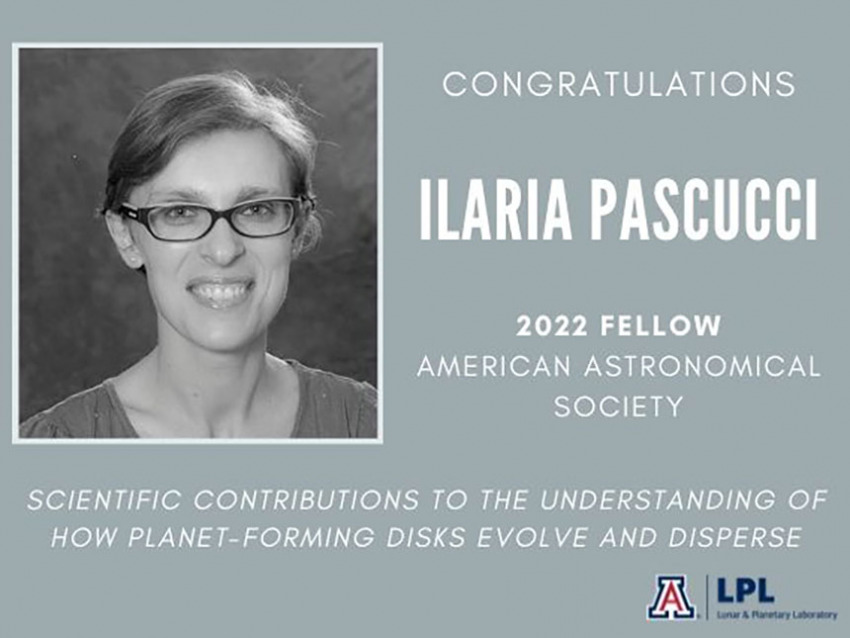
Dr. Tyler Robinson Joins LPL Faculty Starting Fall 2022
Ty conducts theoretical studies of the atmospheres of extrasolar planets and brown dwarfs and has made major contributions to the planning for the next NASA great observatories. He has had great success in building diverse research groups.
Dr. Tyler Robinson Joins LPL Faculty Starting Fall 2022
×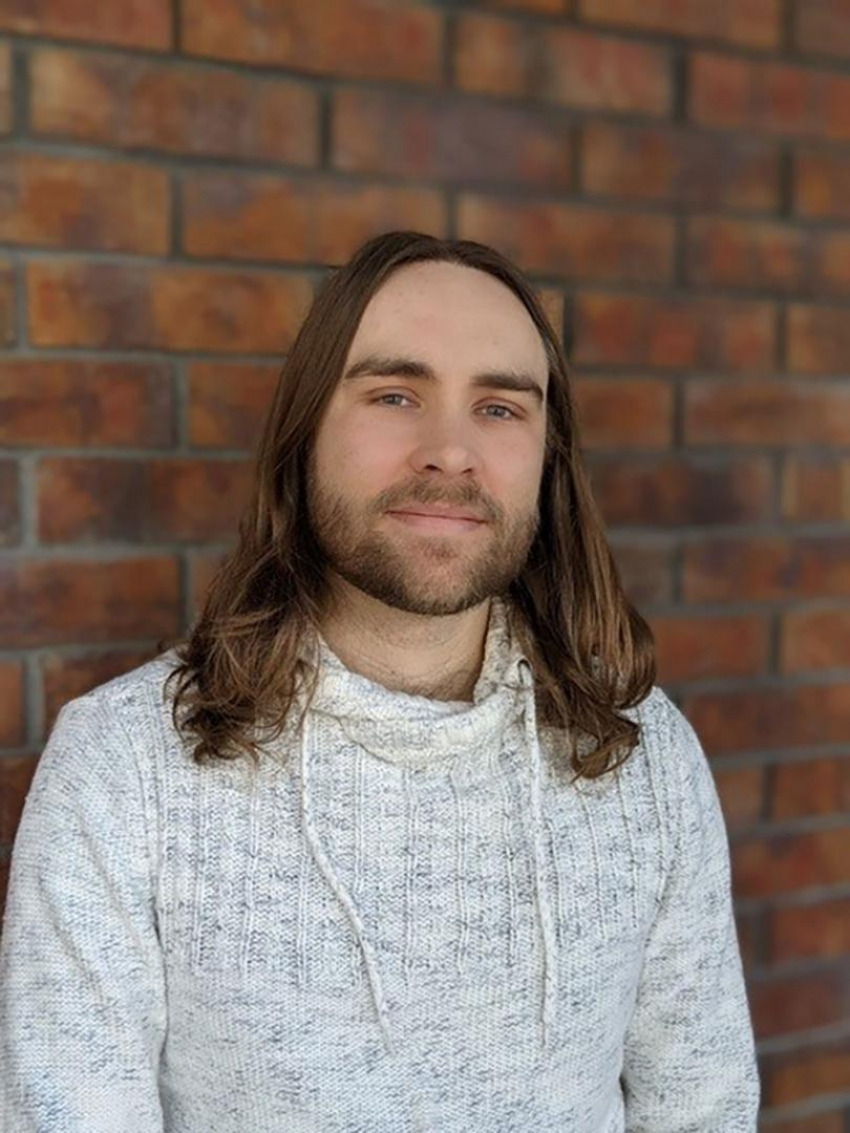
Dr. Tyler Robinson will join LPL as an associate professor. He is an alumnus of the University of Arizona, earning a B.S. in Physics and Mathematics in 2006. He completed a Ph.D. in Astronomy and Astrobiology from the University of Washington in 2012. Ty held prestigious postdoctoral positions as a NASA Postdoctoral Program Fellow at NASA Ames Research Center and as a Sagan Fellow at the University of California, Santa Cruz, and is a Cottrell Scholar (Research Corporation for Science and Advancement).
Dr. Robinson uses sophisticated radiative transfer and climate tools to study the atmospheres of Solar System worlds, exoplanets, and brown dwarfs. He also develops instrument models for exoplanet direct imaging. He combines these areas of expertise in his work on the Habitable Exoplanet Observatory (HabEx) Science and Technology Definition Team, and in his contributions to the LUVOIR, WFIRST/Rendezvous, and Origins Space Telescope mission concept studies.
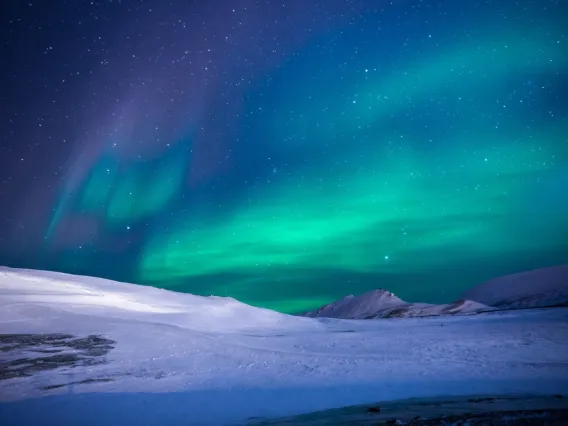
UArizona to Help NASA Understand Solar Wind and Plasma With HelioSwarm Mission
Most visible matter in the universe exists as plasma, and NASA has funded a new mission to study this state of matter that's rarely found on Earth.
UArizona to Help NASA Understand Solar Wind and Plasma With HelioSwarm Mission
×
By Mikayla Mace Kelley, University Communications - March 2, 2022
Plasma is rare on Earth, but it fills the sky. From stars and nebulas to auroras at the poles and solar wind, plasma is the most common visible state of matter – the more familiar ones being liquid, gas and solid.
To more deeply understand this state of matter that makes up 99% of the visible universe, NASA has selected the HelioSwarm mission, an array – or "swarm" – of nine spacecraft, which is tentatively scheduled to launch in 2028 and collect data for at least one year. Kristopher Klein, University of Arizona assistant professor of planetary sciences in the Lunar and Planetary Laboratory, will serve as the mission's deputy principal investigator.
Plasma is matter so incredibly hot that atoms are stripped of their electrons to create what's called ionized gas.
"This mission is leveraging the fact that we have a powerful source of plasma nearby – the sun – that we can use like a natural laboratory to understand this universal process," Klein said.
The sun's plasma is so superheated and energetic that it escapes the sun's gravity and rushes outward as solar wind.
The mission will provide scientists with data to study turbulence in the solar wind. As the solar wind expands to fill the heliosphere – the outermost atmosphere of the sun, which encompasses much of the solar system – it interacts with the magnetic fields of Earth and the sun, so the mission will study the interaction between these fields as well.
"Studying the interaction between the solar wind and Earth's magnetic field is important from a basic physics perspective, and it's also important to understand how energy moves through the system and evolves," Klein said. "And during periods of heightened solar activity, these processes also affect things like global positioning and communications satellites, other spacecraft and astronauts."
"As a species, we're launching more spacecrafts and are becoming more reliant on having more satellites for everyday activities, so understanding how to live with our star is important," he said.
Most of Klein's research is theoretical. He studies how energy moves through different kinds of plasma. With that background, Klein's role as mission deputy principal investigator is to ensure that the science questions can be answered with the instruments onboard the HelioSwarm spacecraft.
Klein has been involved in two other NASA missions to study the sun: the Wind Spacecraft and the Parker Solar Probe. Many other UArizona Lunar and Planetary Lab faculty will also provide support as the HelioSwarm mission progresses.
HelioSwarm is so named because rather than measuring the solar wind at a single point in space at a given time, the mission will consist of one hub spacecraft and eight co-orbiting small satellites, which will swing in large 14-day-long flower-petal-shaped orbits around Earth to allow for multiple measurements in many different configurations. At its farthest point in orbit, a satellite will reach 60 times the distance between Earth and the moon. The hub spacecraft will maintain radio contact with the other satellites, and radio contact between the swarm and Earth will be conducted through the hub spacecraft and the NASA Deep Space Network of spacecraft communication antennas.
The spacecrafts' ever-changing orbital patterns were intentionally designed to provide a more holistic picture of the solar wind as it evolves.
"Think about the solar wind like a waterfall," Klein said. "If you want to understand a waterfall, you have to measure at multiple points throughout its flow. There have been previous missions that have had a few spacecrafts providing multipoint measurement, but the dream is to have a set of spacecrafts that will be separated in such a way that some of them will be relatively close and others far. By doing that, we can measure both large- and small-scale physics at the same time and get a better understanding of how energy flows and evolves as it moves through the solar system."
The HelioSwarm mission's principal investigator is Harlan Spence from the University of New Hampshire. NASA's Alan Zide is the program executive. NASA's Ames Research Center in Silicon Valley, California, will provide project management. Funding and management oversight for the mission is provided by the Heliophysics Explorers Program, managed by the Explorers Program Office at NASA's Goddard Space Flight Center in Greenbelt, Maryland.

UArizona Students Confirm Errant Rocket's Chinese Origin, Track Lunar Collision Course
Students studying the object's composition confirmed that it is most likely a Chinese booster and not a SpaceX booster, as previously reported.
UArizona Students Confirm Errant Rocket's Chinese Origin, Track Lunar Collision Course
×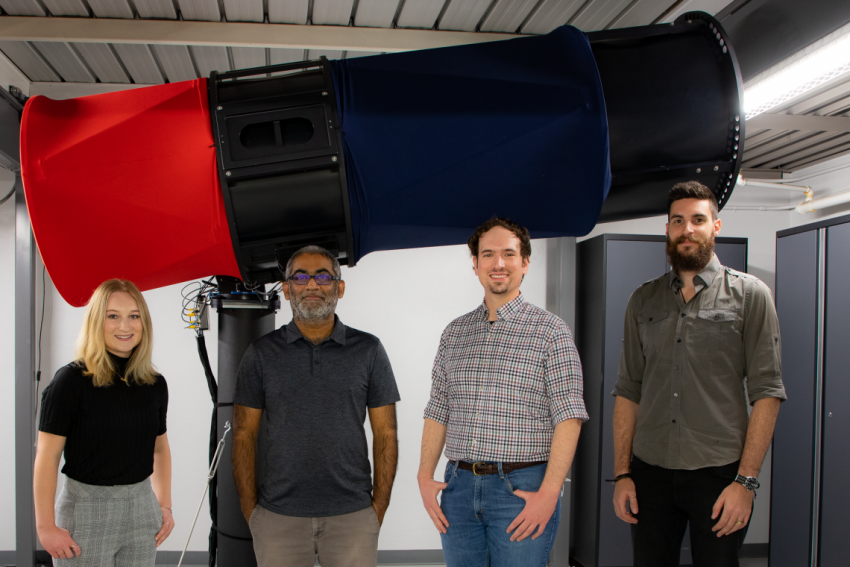
By Mikayla Mace Kelley, University Communications - February 15, 2022
The presumed SpaceX Falcon 9 rocket booster that's on a course to hit the moon March 4 is actually a Chinese booster from a rocket launch in 2014, a University of Arizona team has confirmed.
UArizona students in the university's Space Domain Awareness lab at the Lunar and Planetary Laboratory have had their eyes on the piece of space junk for weeks as they studied its rotation. They have been gathering other data as well, which they used to confirm its Chinese origin.
"We took a spectrum (which can reveal the material makeup of an object) and compared it with Chinese and SpaceX rockets of similar types, and it matches the Chinese rocket," said UArizona associate professor Vishnu Reddy, who co-leads the Space Domain Awareness lab with engineering professor Roberto Furfaro. "This is the best match, and we have the best possible evidence at this point."
Reddy and his students are providing observations to NASA's Jet Propulsion Laboratory to help pinpoint the location of the booster's upcoming impact on the moon, which could be imaged and verified by NASA's Lunar Reconnaissance Orbiter.
They estimate that it will hit somewhere in or near the Hertzsprung crater on the moon's far side. UArizona is the only public university that has a dedicated academic program for space domain awareness. UArizona's space science program was ranked No. 2 among public U.S. universities and No. 10 in the world in U.S. News & World Report's 2021 Best Global Universities rankings.
Based on its path through the sky, the booster was initially thought to be a SpaceX Falcon 9 rocket booster from a 2015 launch, with a trajectory that put it on a path to hit the moon. The unintentional impact of space junk on the moon is uncommon. But the rocket is now believed to be a booster for the Chang'e 5-T1, launched in 2014 as part of the Chinese space agency's lunar exploration program.
Using the RAPTORS system, a telescope atop the Kuiper Space Sciences building on campus, UArizona students took observations on the nights of Jan. 21 and Feb. 7, the latter of which was the last time the rocket would be visible before it hits the moon in March.
"I am astounded that we can tell the difference between the two rocket body options – SpaceX versus Chinese – and confirm which one will impact the moon with the data we have. The differences we see are primarily due to type of paint used by SpaceX and the Chinese," said Adam Battle, a graduate student studying planetary science. Battle has worked at the Space Domain Awareness lab since 2018 and focuses on spectroscopy, which helped confirm the booster's origins. An object's spectrum can also reveal the effects of space weathering.
"We don't often get a chance to track something we know is going to hit the moon ahead of time," said Tanner Campbell, an aerospace and mechanical engineering graduate student who has worked with Reddy since 2017. "There is particular interest in seeing how impacts produce craters. It's also interesting from an orbital prediction perspective, because it's traveling between the Earth and moon unpropelled. It's just an inert rocket body tossed around by its own energy and by solar radiation pressure, so we can evaluate our models and see how good our predictions are."
Campbell focused on photometry of the object, meaning he determined how fast it spins. Rocket bodies have a distinct pattern of brightness that makes them easily identifiable.
This booster is just one of many pieces of space junk that the UArizona team and others around the world are tracking. There are roughly 3,500 active satellites orbiting Earth, and another 20,000 pieces of debris or space junk, according to Reddy. There is significantly less space debris surrounding the moon, however.
"While this isn't the most detrimental impact, the idea of so many objects in space with unknown orbits and identities is worrying," said Grace Halferty, an undergraduate student double majoring in mechanical engineering and biology. She has, since September 2018, been studying SpaceX's Starlink satellites and their effect on ground-based astronomy. "We need better space traffic management."
"There are only a handful of objects in lunar orbit," Reddy said, "but I hope this event sheds light on the growing problem of space junk. This science community is concerned about the growing pollution."
The UArizona team has also tracked and identified many other humanmade objects as they travel across the sky.
- In 2018, the UArizona team used a $1,500 optical sensor they built in four months to track the defunct Chinese space station Tiangong-1 before it fell into the sea on March 31.
- In 2020, the team tracked a piece of an Atlas rocket that launched Surveyor 2 in 1966. Using spectroscopy, the team confirmed that it was what's called the "Centaur upper stage" – the part of the rocket that provides the in-space thrust to set the spacecraft on a precise trajectory toward the moon.
- In 2021, the team tracked the 22-ton Long March 5B rocket that launched China's Tianhe space station module into Earth's orbit before the rocket fell to Earth on May 8.
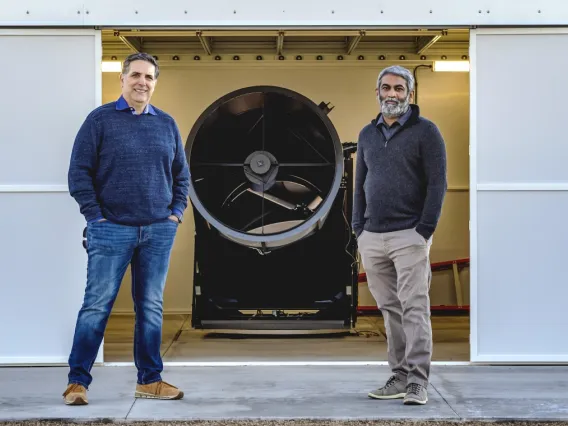
$7.5M Effort Seeks to Prevent Lunar Traffic Jams
University of Arizona researchers are developing ways to detect, characterize and track objects in cislunar space, or the space between Earth and the moon.
$7.5M Effort Seeks to Prevent Lunar Traffic Jams
×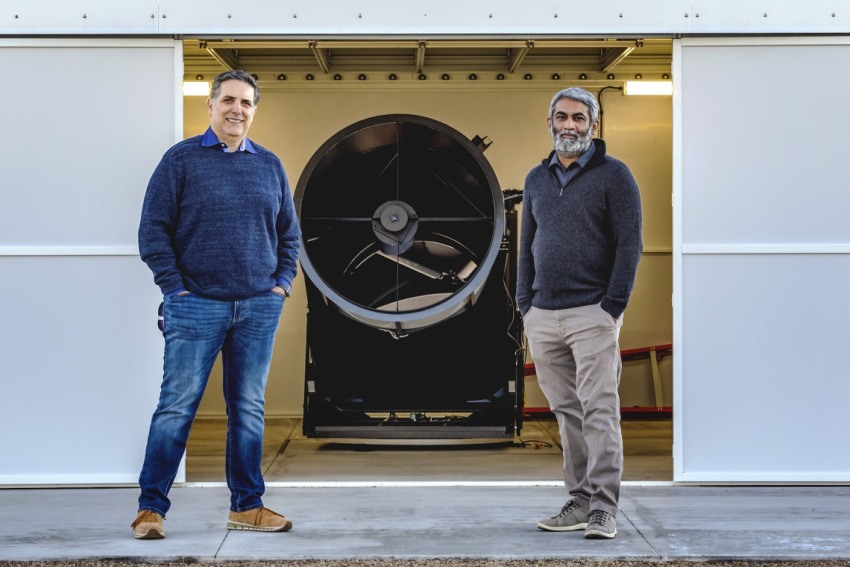
By Emily Dieckman, College of Engineering - February 14, 2022
The moon is top of mind for many national space programs and private companies, with some planning to send humans back to the lunar surface as early as 2025.
In advance, scientists are launching satellites and other payloads to orbit the moon. But so far, no one has kept track of just how many artificial objects are already up there, or where they are at any given moment. Without a way to keep track of traffic, the orbital space surrounding the moon could quickly grow crowded.
The Air Force Research Laboratory's Space Vehicles Directorate has tasked University of Arizona researchers with getting a handle on this impending lunar traffic jam, awarding them $7.5 million in funding.
"The University of Arizona has been a world leader in space exploration for decades, and our scientists were instrumental in mapping the surface of the moon for NASA's Apollo 11 mission in 1969," said University of Arizona President Robert C. Robbins. "We are now building upon this legacy to better understand and proactively address possible traffic congestion between Earth and the moon."
Principal investigators Roberto Furfaro, professor of systems and industrial engineering, and Vishnu Reddy, an associate professor in the College of Science's Lunar and Planetary Laboratory, are developing ways to detect, characterize and track objects in cislunar space, or the space between Earth and the moon.
"With projects like the Catalina Sky Survey and Near-Earth Object Surveyor mission, LPL is at the cutting edge of detecting and characterizing natural moving space objects such as asteroids," said Carmala Garzione, dean of the College of Science. "This team is drawing on decades of expertise to do the same for humanmade objects between Earth and the moon."
Getting ahead of potential problems
According to NASA, there are more than 23,000 cataloged objects orbiting Earth, and congestion is an increasing concern. In contrast, Furfaro and Reddy estimate there are just dozens of payloads orbiting the moon.
"The orbital space around the Earth is becoming extremely congested, so the Space Force and Air Force Research Laboratory are trying to get ahead of the problem around the moon," said Furfaro, who initiated a space domain awareness program at the university in 2015. "The University of Arizona and the Air Force Research Lab have been working together for years on space domain awareness. Now, we're taking the next step and expanding this awareness all the way to the moon."
While the team's prior Air Force collaborations focused on awareness of objects in geostationary range – approximately 36,000 miles out from the center of the Earth – this project extends to 437,700 miles away from Earth's center, and beyond.
Payloads launched into cislunar orbit are mostly self-reported, and they are not monitored by a central international agency. The UArizona team will create cyberinfrastructure to characterize and identify the objects, paving the way for a well-organized path to the moon. Reddy compared it to coming in on the ground floor of a new infrastructure plan. That is, they're not trying to increase the efficiency of roads, but are studying the early sources of traffic to better inform decision making before the roads even exist.
"University collaborations like this are key to the Space Force's goal of providing a safe and sustainable space ecosystem and developing a highly capable talent pool for the U.S. Space Force now and in the future," said Benjamin Seibert, Space Control Mission Area lead for the Air Force Research Laboratory, or AFRL. "Capabilities to detect, track and catalog objects from the Earth to the moon and beyond enable freedom of navigation critical to civil and commercial use of space. We are very excited to continue our collaborations with University of Arizona."
Tracking from a distance
Reddy and his students in the Lunar and Planetary Laboratory use dedicated sensors at the university's Biosphere 2 research facility to characterize objects in space. Their suite of equipment includes several telescopes dedicated to space domain awareness, including one built by a group of UArizona engineering undergraduates.
Tracking humanmade objects in cislunar space, rather than natural objects such as asteroids, comes with a unique set of challenges. Objects in cislunar space are harder to see, not only because they're farther away than objects orbiting Earth, but because they can be lost in the moon's glare.
"It's like tracking a firefly that's flying around a searchlight," said Reddy, who has pioneered the observational techniques to track cislunar objects.
Furfaro's background is in orbital mechanics and machine learning for artificial objects in space. While Reddy is concentrating on detection and tracking, Furfaro will create methods to analyze and catalog the data. The team will also partner with future missions sending objects into cislunar orbit, so new objects can be tracked and cataloged from the start of their journeys.
"Roberto (Furfaro) has earned a lot of recognition for his work – including being named the College of Engineering's 2020 da Vinci Fellow and having an asteroid named after him," said David W. Hahn, Craig M. Berge Dean of the College of Engineering. "He and Vishnu (Reddy) have worked together on several successful, high-profile projects. I'm confident they're the perfect people to lead this effort, and to place the University of Arizona at the forefront of cislunar space domain awareness."
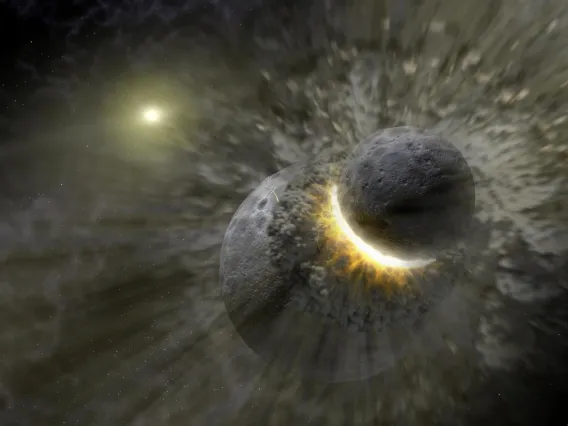
It Takes a Special Kind of Planet to Make a Moon
Generally thought to be the products of celestial bodies crashing into each other, moons around terrestrial planets may play important roles in shaping the conditions for life to emerge. For sizable moons to form successfully, the circumstances must be just right, according to a study published in Nature Communications.
It Takes a Special Kind of Planet to Make a Moon
×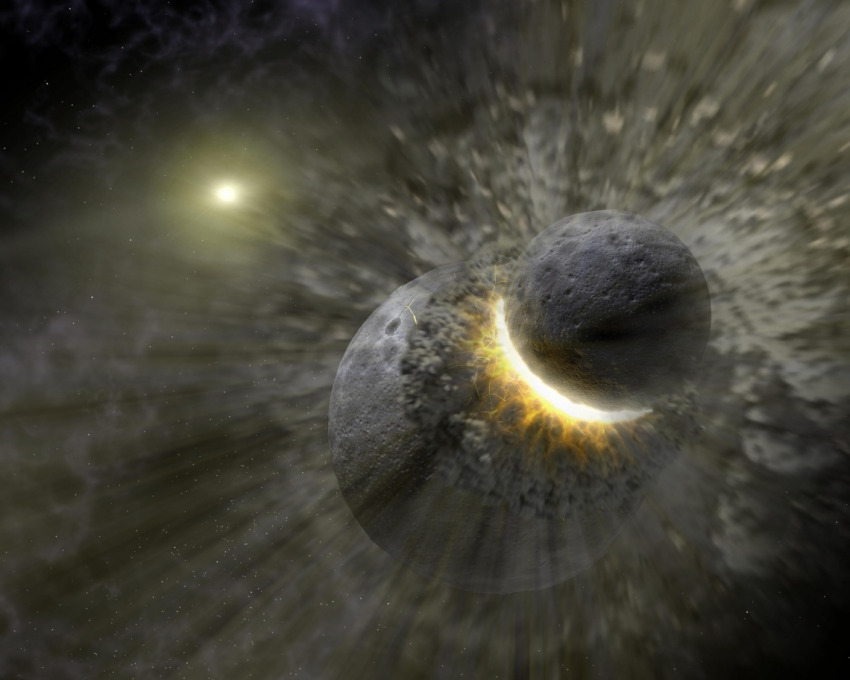
By University Communications - February 1, 2022
Based on analyses of lunar rock samples that Apollo and other space missions brought back to Earth, scientists know more about Earth's moon than any other planetary body. However, questions continue to vex scientists regarding how a planet forms a moon, and why some planets have moons while others do not.
In a new paper published in Nature Communications, researchers from the University of Rochester, University of Arizona and Tokyo Institute of Technology have made an important discovery that helps unravel the mysteries of the moon. The new study proposes that planets have to be of a certain makeup and within a limited mass range for moons to form.
"The question we set out to answer is: Can all planets form substantial moons?" said study co-author Erik Asphaug, a professor in UArizona Lunar and Planetary Laboratory.
As scientists continue to explore the possibility of other life in the universe, the research has important implications for determining the factors that make a planet habitable. A planet may not require a large moon to be habitable, but Earth's moon is vitally important in shaping life as we know it: It controls the length of the day and ocean tides, which affect the planet's biological cycles. The moon also contributes to Earth's climate by stabilizing its spin axis, offering an ideal environment for life to develop and evolve.
"By understanding moon formations, we have a better constraint on what to look for when searching for Earthlike planets," said lead study author Miki Nakajima, an assistant professor of Earth and environmental sciences at the University of Rochester. "We expect that exomoons (moons orbiting planets outside our solar system) should be everywhere, but so far we haven't confirmed any. Our constraints will be helpful for future observations."
Earth is the only known planet to host life and has a number of features that make it unique. These include active plate tectonics, a strong magnetic field and a moon that is quite large. More than a quarter of the size of Earth, the moon raises tides in the oceans that are important to life, so researchers have conjectured that a moon may be a potentially beneficial feature for harboring life on other planets.
It is generally accepted that Earth's large moon was generated by a collision between proto-Earth and another planet about 4.5 billion years ago. The collision resulted in the formation of a disc of mostly melted, partially vaporized rock that eventually became the moon.
To find out whether other planets can form similarly large moons, the researchers conducted 3D computer simulations, starting with a number of hypothetical planets of varying masses. The fledgling planets either had an architecture similar to Earth's – namely a mantle of rock and a core of iron – or they were icy planets in which the mantle is water ice and the core is rock.
They found that if the planet is too massive, giant impacts produce discs consisting entirely of vapor. This is because impacts between more massive planets are more energetic and happen at higher velocity. Over time, the vapor disc from such an impact cools, and liquid moonlets – the building blocks of moons – are formed.
"These growing moonlets experience a strong drag force as they plow through the vapor disc, which slows them down," Asphaug said. "Before long, they succumb to the gravity of the planet and fall into it, without making a moon."
Once the disc has cooled off and its vapor has begun to dissipate, moonlets face less drag and stand a better chance of growing into moons. However, by that time, a significant portion of them have been lost to the planet. The researchers conclude that a vapor-only disc is not capable of forming large moons. The disc has to start off initially low in vapor for the moonlets to grow without experiencing strong gas drag.
"Giant impacts work great at making moons, but only to a point," Asphaug said.
The results provide important guideposts for researchers studying planets in other solar systems, according to the authors. In particular, some planets are too massive to form a sizable moon. Computer simulations showed that rocky planets more than six times the mass of Earth – so-called super-Earths – end up with vapor-only discs, meaning that a large moon could not grow. The same is true for planets with a water-rich or icy composition whose mass exceeds that of Earth; they, too, will end up with vapor-only disks and no moon.
Thousands of exoplanets have been discovered, but astronomers have yet to definitively spot a moon orbiting a planet outside our solar system.
"We're still a long way off until we learn the different kinds of moons that orbit the exoplanets that are out there," Asphaug said.
"The exoplanet search has been focused on large planets, typically larger than 1.6 Earth radii (60% larger than Earth)," Nakajima said. "We are proposing that, instead, we should look at smaller planets because they are probably better candidates to host fractionally large moons."
The research is based on computer simulations that are the result of efforts since the 1980s to understand how Earth's moon formed as the result of a giant impact at the end of Earth’s formation, Asphaug said.
"Most of the focus so far has been on how the Earth's moon came to be, but we think the moon started off as a flying magma ocean, not mostly vapor,” he said, referring to the disc of molten rock around the early Earth. "These moonlets were able to accrete into the major body that we know and love."
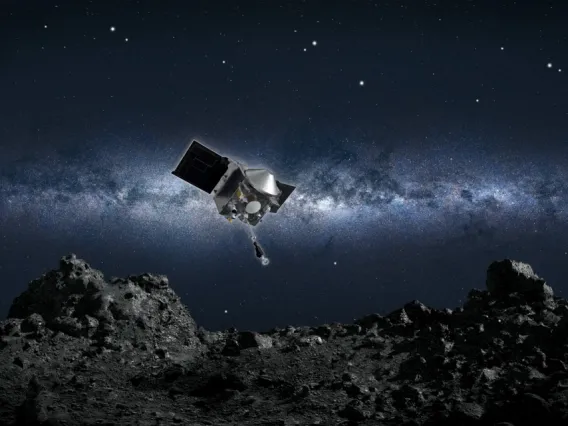
OSIRIS-REx Mission Team Wins 2022 Swigert Award for Space Exploration
The award recognizes the team behind the mission's successful collection of a pristine sample from an asteroid for laying "the groundwork for forging the next generation of scientists, astronomers, geologists and more."
OSIRIS-REx Mission Team Wins 2022 Swigert Award for Space Exploration
×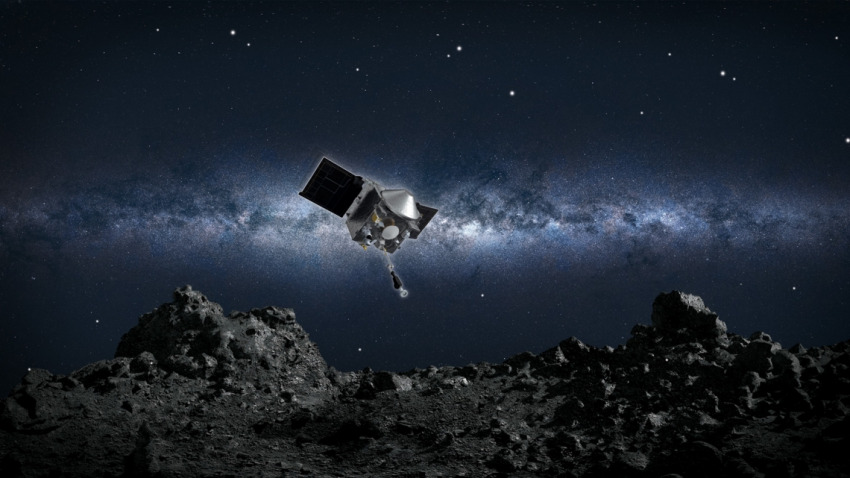
By Daniel Stolte, University Communications - January 19, 2022
The NASA and University of Arizona OSIRIS-REx asteroid sample return mission team has been selected to receive the 2022 John L. "Jack" Swigert Jr. Award for Space Exploration by the Space Foundation, a nonprofit organization that advocates for space exploration and space-inspired industries.
The award will be presented April 4 during the opening ceremony of the 37th Space Symposium in Colorado Springs.
"I am enormously grateful to the Space Foundation for this honor," said Dante Lauretta, University of Arizona professor of planetary sciences and principal investigator of the OSIRIS-REx mission. "The OSIRIS-REx team represents the pinnacle of human achievement. Team members have diverse backgrounds, skillsets and expertise. Together, we overcame numerous challenges to successfully collect a massive sample from asteroid Bennu. The best times are ahead of us, and the team is busy preparing for the analysis of these scientific treasures from outer space."
The OSIRIS-REx spacecraft launched Sept. 8, 2016, from Cape Canaveral Air Force Station and reached near-Earth asteroid Bennu in 2018. The spacecraft spent more than two years near the asteroid, which is one-third of a mile (500 meters) wide.
Repeatedly breaking records for the closest orbit ever flown around a celestial body, the spacecraft gathered information about Bennu's size, shape, mass and composition while monitoring its spin and orbital trajectory.
On Oct. 20, 2020, the OSIRIS-REx spacecraft extended its sample collection arm and made contact with Bennu in a clear spot in a crater in the asteroid's northern hemisphere. Bennu's surface turned out to be much rockier than expected based on ground-based observations.
"The OSIRIS-REx team has shown that, time and again, they are equal to the challenges inherent in exploration," said Thomas Zurbuchen the associate administrator for science at NASA Headquarters in Washington, D.C. "This team's efforts now provide the chance to unlock new discoveries about our solar system's beginnings, as this sample of asteroid Bennu will be studied for generations to come.”
With the sample of dust and rock stowed inside the spacecraft's sample return capsule, OSIRIS-REx left the asteroid on May 10, 2021. The sample is scheduled to return to Earth in September 2023, with the capsule touching down at the Utah Test and Training Range. Following initial identification and processing at the Johnson Space Center, a team led by Lauretta will begin detailed analysis of the sample at UArizona.
Since Bennu is likely an extraterrestrial accumulation of the leftover material dating back to the birth of the solar system, the pristine material OSIRIS-REx will return to Earth is expected to hold unprecedented clues about the history of the solar system, including the possible origins of the ingredients that gave rise to life on Earth.
The John L. "Jack" Swigert Jr. Award for Space Exploration recognizes extraordinary accomplishments by a company, space agency, or consortium of organizations in the realm of space exploration and discovery. The award honors the memory of astronaut John L. "Jack" Swigert Jr., one of the inspirations for the creation of the Space Foundation.
A Colorado native, Swigert served with retired U.S. Navy Captain James A. Lovell Jr. and Fred Haise on the legendary Apollo 13 lunar mission, which was aborted after the perilous rupture of an oxygen tank while the spacecraft was on its way to the moon. People around the world watched as NASA overcame tremendous odds and returned the crew safely to Earth. In that spirit of accomplishment, the Swigert Award is presented annually at the Space Symposium by the Space Foundation.
"The OSIRIS-REx team has raised the bar when it comes to extraordinary accomplishments in the realm of space exploration and discovery," said Space Foundation CEO Tom Zelibor. "The team has laid the groundwork for forging the next generation of scientists, astronomers, geologists and more. That is historic on so many levels and further transforms the exploration of space for the betterment of all of humanity."
Founded in 1983, the Space Foundation is a nonprofit advocate organization dedicated to offering a gateway to information, education and collaboration for space exploration and space-inspired industries that define the global space ecosystem. Driven by a partnership model, Space Foundation operates three divisions that unite the entire spectrum of stakeholders — business, government, education and local communities — through corporate membership, sponsorship, fundraising and grants.
UArizona researchers also were honored with the John L. "Jack" Swigert Jr. Award as part of NASA's Phoenix Mars Lander team in 2009. UArizona's Peter H. Smith was principal investigator for the Phoenix Mars Mission. The lander surpassed its original three-month mission, lasting five months in the Martian northern plains and digging up scientific "firsts" along the way, including the first confirmation of water on the Red Planet.
NASA's Goddard Space Flight Center provides overall mission management, systems engineering and the safety and mission assurance for OSIRIS-REx. Lauretta is the principal investigator, and the University of Arizona also leads the science team and the mission's science observation planning and data processing. Lockheed Martin Space Systems built the spacecraft and is providing flight operations. Goddard and KinetX Aerospace are responsible for navigating the OSIRIS-REx spacecraft. OSIRIS-REx is the third mission in NASA's New Frontiers Program. NASA's Marshall Space Flight Center manages the agency's New Frontiers Program for the agency’s Science Mission Directorate.
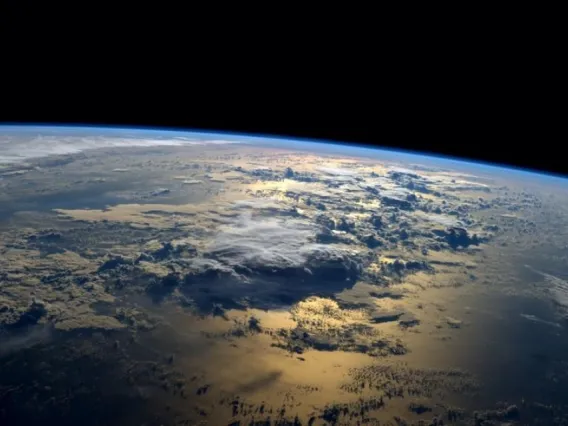
Student-Led Initiative Will Launch Satellites as 'Ambassadors for World Peace'
A partnership that builds on the University of Arizona's extensive track record in space exploration is dedicated to promoting collaborative and sustainable space exploration and helping educate a workforce fluent in space-faring technology.
Student-Led Initiative Will Launch Satellites as 'Ambassadors for World Peace'
×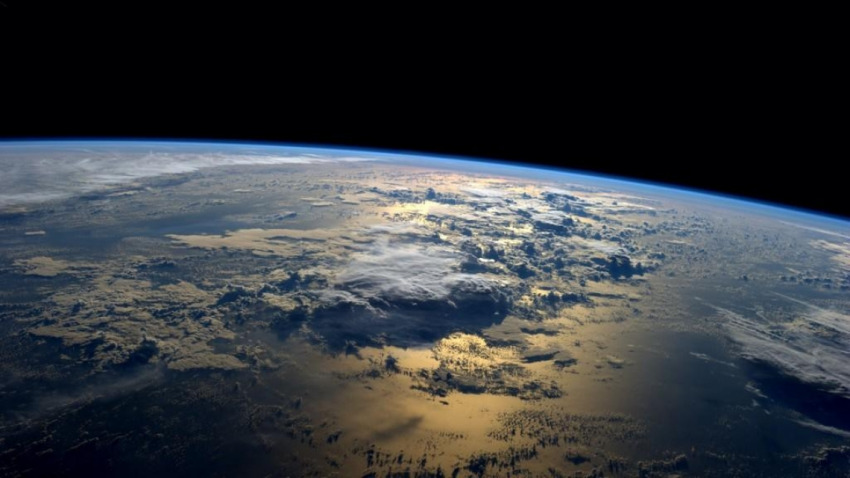
By Daniel Stolte, University Communications - Dec. 16, 2021
The University of Arizona has joined a collaboration with Space Trust – a nongovernmental organization based in the United Kingdom – and the University of Nairobi in Kenya to develop a series of Earth-orbiting spacecraft built by university students.
The Peace Satellite Project aims to promote global peace and international cooperation, while providing university students hands-on opportunities in science, technology engineering and math.
Dante Lauretta, a Regents Professor of Planetary Sciences in UArizona's Lunar and Planetary Laboratory and principal investigator for NASA's OSIRIS-REx asteroid sample return mission, has been appointed chief scientist of the project.
The project's first mission will train future space technology leaders in the U.S. and Kenya with an integrated engineering curriculum focused on the design, construction, development, launch and operation of student-built small satellites. The mission is named 0G2030 because it will advocate for making space the new frontier for peace. The 0G stands for "zero gravity," a common shorthand for an environment with little or no gravity, and 2030 refers to the United Nations 2030 Agenda for Sustainable Development.
"The 0G2030 mission seeks to advocate its founding principle of making space the new frontier for peace on Earth and to utilize outer space for innovative space diplomacy on Earth," said Namira Salim, founder and executive chair of Space Trust, which champions world peace through space-themed initiatives.
"A central idea of the project is to provide people on Earth with an experience similar to what astronauts call the 'overview effect' – the experience of viewing our world from above and realizing how fragile it is," Lauretta said. "We want to make it accessible to anyone, not just the tiny fraction of people who are given the opportunity to view the Earth from space."
At the heart of the Peace Satellite Project are CubeSats, small satellites that provide a user-friendly and cost-effective platform for getting hardware and software into space. CubeSats consist of a modular, standardized design built on cubes or "units" measuring 10 centimeters (about 4 inches) along each side. These CubeSats will be designed and built by students at the University of Nairobi in collaboration with students at UArizona, with mentorship provided by faculty at both universities.
Once the satellites are in orbit, Space Trust plans to use them as platforms to transmit messages of peace around the world using the spacecraft communication system. These peace messages will be uploaded in the voices of political, social and religious leaders, as well as members of the general public and young people.
"At this time of the democratization of space, we want to send messages that promote equitable and sustainable space exploration as a tool for accomplishing world peace," Salim said. "We conceived the 0G2030 mission to directly support the United Nations Sustainable Development Agenda of 2030."
Students from the University of Nairobi have satellite design and development experience from the 1KUNS satellite, the first CubeSat mission of the Kenya Space Agency, and UArizona students have learned from working on CatSat1, a CubeSat currently being developed at the University of Arizona.
The UArizona students will develop the broadcasting antenna for the 0G2030 CubeSat, provide ground system support for spacecraft operation and lead the environmental qualification program for the satellite, which certifies survivability through launch and in space.
On Oct. 23, the two universities and Space Trust participated in an international symposium where they discussed the development of the UArizona CatSat1 and the University of Nairobi's CubeSat platform, and exchanged experiences including current progress and the applications of this technology to the planned 0G2030 CubeSat.
"I'm most excited about continuing our CubeSat development in collaboration with our Kenyan colleagues," Lauretta said. "Through this unique opportunity, students will build a one-unit CubeSat that will serve as a pathfinder project. They will gain hands-on experience on how to ship, test and commission an actual space satellite."
Following the one-unit CubeSat, the universities plan to develop a larger three-unit CubeSat.
"Our students will gain experience in design of mobile applications that help incorporate, integrate and disseminate satellite data such as peace messages and develop and transform it into a three-unit CubeSat," said J. Mwangi Mbuthia, principal investigator of the Nanosatellite Platform for the University of Nairobi. Mbuthia is a professor of engineering and holds the Kenya Space Agency Research Chair at the University of Nairobi.
The project will use a specialized testing lab that is currently being constructed at the University of Arizona. The lab will put hardware through the paces by mimicking the environmental conditions of launch and operation in space.
"Our collaboration dovetails perfectly with UArizona's investments in space development," Lauretta said. "Drawing from our extensive track record in robotic space exploration, we will provide technical advice and expertise to help educate a workforce fluent in space-faring technology."
"We hope the initiative will galvanize our common humanity, harness the power of space to unite nations in the midst of an increasingly divisive world and encourage global partnerships," Salim said.
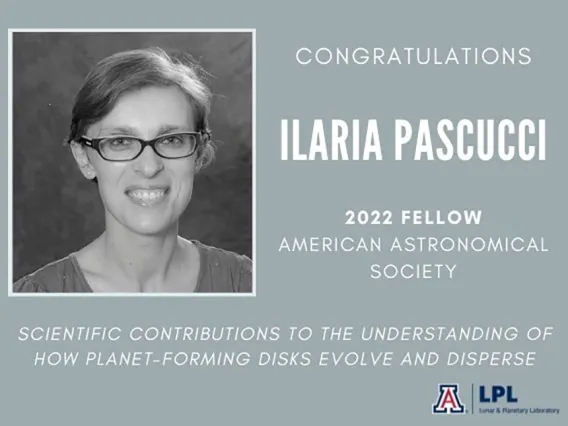
Associate Professor Ilaria Pascucci Named 2022 AAS Fellow
Dr. Ilaria Pascucci
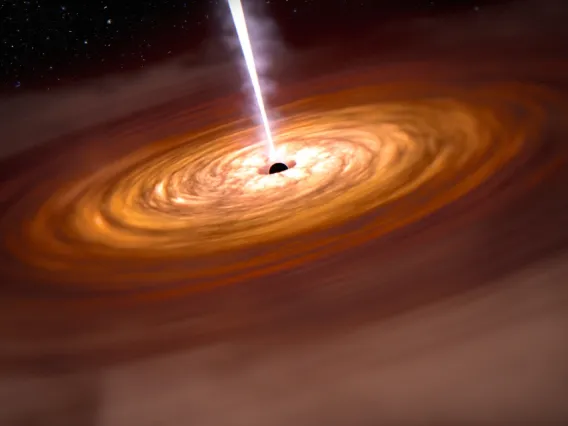
Scouting Ancient Supermassive Black Holes
A team of researchers led by University of Arizona astronomers will use NASA's James Webb Space Telescope to examine three active supermassive black holes, their host galaxies and their neighborhoods to better detail these distant objects and the conditions of the early universe.
Scouting Ancient Supermassive Black Holes
×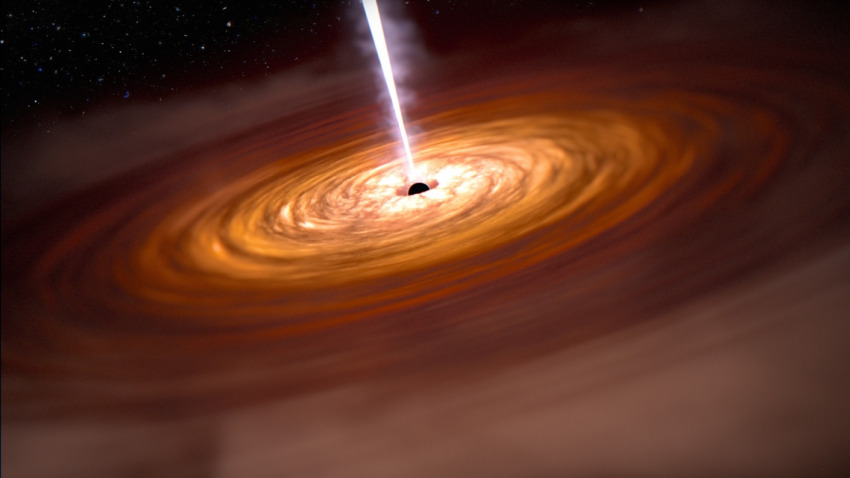
By University Communicationss and Space Telecope Science Institute - December 8, 2021
Very distant, active supermassive black holes are the brightest beacons in the universe. Known as quasars, these behemoths are surrounded by equally distant galaxies. Gas and dust orbit these supermassive black holes and continuously rub together to create heat and light, which can be detected by telescopes.
Astronomers theorize that it can take billions of years for supermassive black holes and their accompanying galaxies to form. How is it possible that these quasars became so gigantic, with billions of solar masses, in the first 700 million years of the universe? Once you can see past their glare, what do their accompanying galaxies look like? And what do their "neighborhoods" look like?
These are questions an international team of astronomers will pursue with observations taken by NASA's James Webb Space Telescope, which is slated for launch on Dec. 22. Xiaohui Fan, a Regents' Professor of Astronomy at the University of Arizona's Steward Observatory, is the principal investigator of the observing program. Jinyi Yang, the Peter A. Strittmatter Postdoctoral Fellow at Steward, and Eduardo Bañados, a staff astronomer at the Max Planck Institute for Astronomy in Heidelberg, Germany, are co-principal investigators.
The team will focus specifically on the three most distant quasars currently known. All three were discovered since 2018 by groups including UArizona astronomers, and each is located more than 13 billion light-years away.
"These distant quasars are really valuable objects," Fan said. "We structured this program to learn everything we could think of, so our team and the greater astronomical community can fully explore these quasars."
The James Webb Space Telescope, also known simply as Webb, will offer new views of the distant quasars in high-resolution infrared light. With that data, Fan's team hopes to refine calculations of the quasars' masses, detail the stars in their host galaxies and survey the galaxies in their neighborhoods. The research may influence how we view the early universe.
Webb's sensitivity to infrared light – including mid-infrared wavelengths that can only be captured from space – will allow the team to observe these quasars, whose light has traveled for 13 billion years and had its wavelengths stretched from ultraviolet and visible light to infrared light.
Zooming in – and Out
To observe the quasars, Fan, Yang and Bañados will use almost every available instrument on Webb, including a camera developed under the leadership of a UArizona astronomer. First, they will refine the measurements of the mass of each supermassive black hole.
"The existence of these black holes challenges theoretical models," Yang said. "We want to obtain more accurate measurements of their masses to improve our understanding of how they formed and grew so quickly."
To increase the precision of existing measurements from other observatories, the researchers will turn to spectra – data that detail an object's physical properties, including mass and chemical composition – delivered by Webb's Near-Infrared Spectrograph, or NIRSpec. This will allow the team to calculate black hole masses more accurately. The team will also obtain spectra with Webb's Mid-Infrared Instrument, or MIRI.
Next, the researchers will focus on revealing the galaxies behind the quasars' bright light. They will take deep, detailed images of each quasar with Webb's Near-Infrared Camera, or NIRCam, and then use computer models to remove the quasars' light from the images. The final, processed images will provide the first views of the light from the stars in the host galaxies.
The NIRCam instrument was developed by a group led by Marcia Rieke, a Regents' Professor of Astronomy at Steward Observatory. George Rieke, also a Regents Professor of Astronomy, is science team lead for the Mid-Infrared Instrument.
Fan's team also will trace how gas is moving in the quasars' host galaxies and determine if the active supermassive black holes are sending out hot winds that heat the galaxies' gas. Although no one can watch a complete feedback loop in real time, as it takes millions of years, the scientists can sample what's present with NIRSpec and begin to observe the connections between the quasars and their host galaxies.
The researchers will also "zoom out" to see galaxies near the quasars. Webb's expansive, high-resolution observations will help the team characterize the galaxies that are in the neighborhood by using Webb's Near-Infrared Imager and Slitless Spectrograph, or NIRISS, and NIRCam.
Finally, the researchers will sample the large-scale environments around the quasars – looking at the characteristics of the gas and dust to help answer the question: What was the universe like 700 or 800 million years after the Big Bang?
"This was a period known as the Era of Reionization, when the gas between galaxies was largely opaque," Yang explained. "Only after the first billion years of the universe did the gas become fully transparent, allowing light to travel more easily. In other words, the universe became visible for the first time."
"These targets represent an important age of the universe – essentially the peak of this transition," Bañados said. "Webb will provide new constraints about what this period was like."
Fan, Yang, and Bañados will release data and tools from their observing program to the astronomical community to accelerate overall research on quasars in the early universe.
"Webb will help us make the next quantum leap in understanding these objects," Fan said.
The following quasars are the three targets of the research program:
- J0313-1806, which dates back to 670 million years after the Big Bang and is 1.6 billion times more massive than the sun
- J1007+2115, or Pōniuāʻena, which dates back to 700 million years after the Big Bang and holds 1.5 billion solar masses
- J1342+0928, which dates back to 690 million years after the Big Bang and is 800 million times the mass of the sun
The James Webb Space Telescope will be the world's premier space science observatory. Webb is an international program led by NASA with the European Space Agency and the Canadian Space Agency.
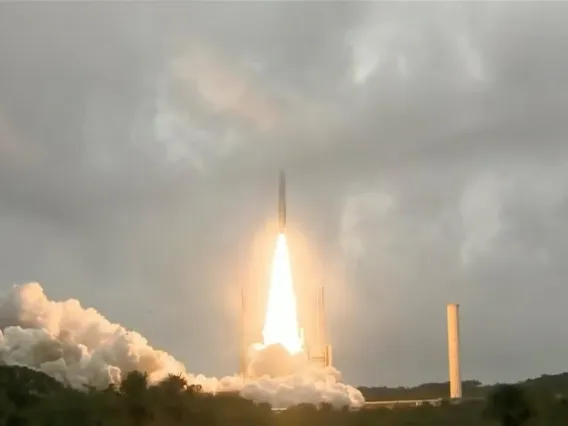
NASA's James Webb Space Telescope Successfully Begins its Journey to Space
UArizona led the design and development of the Near-Infrared Camera onboard the James Webb Space Telescope. Once Webb has successfully unfolded and parked in its outpost past the moon, the UArizona instrument will align the telescope's 18 mirror segments and serve as the Webb's primary imager for at least the next 5 1/2 years.
NASA's James Webb Space Telescope Successfully Begins its Journey to Space
×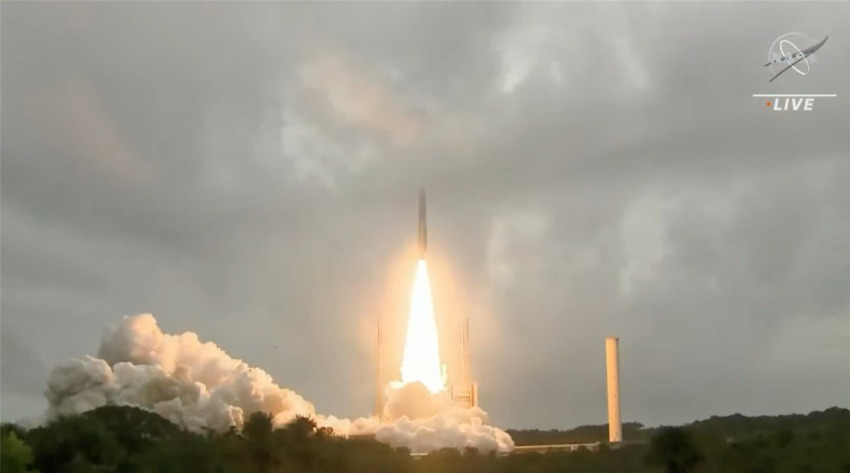
University Communications - December 25, 2021
On Dec. 25 at 5:20 a.m. (MST), the Ariane 5 rocket roared into the sky from its launchpad in Kourou, French Guiana, with the James Webb Space Telescope safely stowed inside. The successful launch marked the beginning of the telescope's monthlong journey to its new home, which is four times farther away from Earth than the moon. If all goes smoothly, a new era in space observation will begin.
Webb is NASA's top science priority and involved decades of work by thousands of scientists, engineers, and managers in the U.S., Canada and Europe. University of Arizona astronomers played key roles in designing and developing the telescope's infrared eyes, which will allow it to peer deeper into the cosmos than ever before and collect light from the earliest stars and galaxies, nebulous stellar nurseries, planetary atmospheres, and more.
Webb's Near-Infrared Camera, or NIRCam, is one of the most sensitive infrared cameras ever built and will serve as the telescope's primary imager. UArizona Regents Professor of Astronomy Marcia Rieke, principal investigator for NIRCam, led the development of the instrument that Lockheed Martin's Advanced Technology Center built, designed and tested.
George Rieke, Marcia's husband and also a Regents Professor of Astronomy at UArizona's Steward Observatory, is the science team lead for the Mid-Infrared Instrument, or MIRI, built by a consortium of European scientists and engineers and NASA's Jet Propulsion Laboratory. The instrument was added to Webb to expand the telescope's reach even farther into the infrared spectrum.
Infrared astronomy was once a niche endeavor fraught with extreme technical challenges. The Riekes helped the field of flourish into a powerful discipline that has allowed scientists to see the universe in ways that were deemed impossible 50 years ago.
"Never did I imagine that I would be searching for distant galaxies as I started out in infrared astronomy by observing bright red stars," Marcia said.
"Infrared astronomy started here in the 1960s, and it has been an exciting ride all the way to the revolutionary capabilities of the Webb Telescope," George said.
Two other instruments, supplied by the European and Canadian space agencies, round out Webb's scientific package.
"It's incredibly exciting to have a successful launch," said Buell Jannuzi, astronomy department head and director of Steward Observatory. "I am so happy for everyone who made this possible and am looking forward to the science that will come from everyone's hard work in the months ahead."
First Things First
Webb must travel for a month to reach its target location. During the trip, many precise unfoldings and adjustments will have to be perfectly executed to ensure proper functioning of the telescope. There will be no fixing it once it has arrived at its destination.
A telescope's image clarity is determined by the size of its mirror compared to the wavelength of light it's collecting. Infrared light has longer wavelengths than visible light, so a larger mirror is needed to produce quality images. Webb's primary mirror is over two stories tall and the sunshields that protect it from the heat of the sun, Earth and moon are as long as a tennis court.
Thrusting such a large and expensive piece of equipment into space can be full of challenges, even on a rocket as large as the Ariane 5. NASA's trick? Fold the telescope so it fits into the nose of the rocket and unfurl it in space.
Within 24 hours of Ariane 5's launch, Webb will pass the moon. About three days post-launch, its sunshields will begin to unfurl. Other mechanisms will shift and separate before the sunshields reach their full length. The temperature of the membrane closest to the sun will be nearly as hot as the boiling point of water, but the layers of sunshield membranes, each as thin as a human hair, will cool the telescope to nearly 400 degrees below zero – cold enough to liquify air.
About 11 days after launch, the telescope will have cooled enough for the secondary mirror to spring into place, followed two days later by the wings of the primary mirror. The primary mirror is made up of 18 hexagonal segments, which allow for the mirror to be nearly circular but also foldable. Unfolded, the primary mirror measures more than 21 feet across.
Twenty-nine days after launch, controllers on Earth can fire thrusters to accurately park Webb in its final orbit. Unlike the Hubble Space Telescope, which orbits Earth, Webb will orbit the sun. Webb's orbit lets it fly in formation with Earth, making it possible for the telescope to radio data back to the researchers on the ground.
Once sufficiently cooled, NIRCam can begin its first order of business – precisely aligning the mirror segments so they work as a unit. NIRCam will sense incoming infrared light as a wavefront – an ideally perfect sphere of light particles emitted from a luminescent object. When those particles encounter another object – in this case, the telescope's optics – they become distorted. NIRCam measures those distortions on a nanometer scale, and that data is used to advise how Webb's mirrors must adjust. This process continues until the telescope's mirrors are properly aligned and is critical to ensuring Webb provides crystal clear images.
About 180 days after launch, scientific observations can begin. NASA has allotted observing time to scientists around the world, with 13% of the total observing time awarded to two UArizona instrument teams and other UArizona astronomers. This gives the university more viewing time than any other astronomy center in the world.
NIRCam and MIRI's Goals
NIRCam was conceived to carry out Webb's original purpose: to discover what astronomers refer to as "first light" galaxies at the moment of their formation in the very early universe.
"We can currently see galaxies back to 500 to 600 million years post-Big Bang, nearly 13 billion years ago," Marcia said. "I've always wanted to find the most distant galaxies and trace how galaxies changed from that epoch all the way down to the current times. My other goal is to look at the atmospheres of exoplanets and understand their composition."
NIRCam team members including assistant research professors Christina Williams and Kevin Hainline, research professor Eiichi Egami and associate research professor Christopher Willmer are working to find the first galaxies while assistant research professors Thomas Beatty, Jarron Leisenring and Everett Schlawin will be looking at the results on exoplanet atmospheres.
While Webb will only look a bit farther than we already can see with Hubble, it will look much closer to the Big Bang, George said.
"If you're counting from the Big Bang, it's going to get twice as close, rather than 5% further back than we have looked," he said, "and that is a very important distinction."
George – along with postdoctoral research associates Jianwei Lyu and Michael Florian and assistant research professors Stacey Alberts and Irene Shivaei – is looking forward to understanding the origin of quasars and active galactic nuclei.
"Some of them may be so hidden in dust that they just can't be found with current observatories," he said. "But they cannot hide from Webb and its super-sensitive Mid-Infrared Instrument."
The following University of Arizona Steward Observatory faculty and staff also played a role in getting Webb off the ground and into space: program manager Debbie Wilson; electronic technical services specialist Ken Don; systems engineer Doug Kelly; assistant research professors Andras Gaspar and Schuyler Wolff; research professor Kate Su; astronomy and astrophysics graduate students Ryan Endsley, Raphael Hviding and Charity Woodrum; associate staff scientist Jane Morrison; staff scientist Karl Misselt; and research engineering electronic technician manager Dave Beaty.

